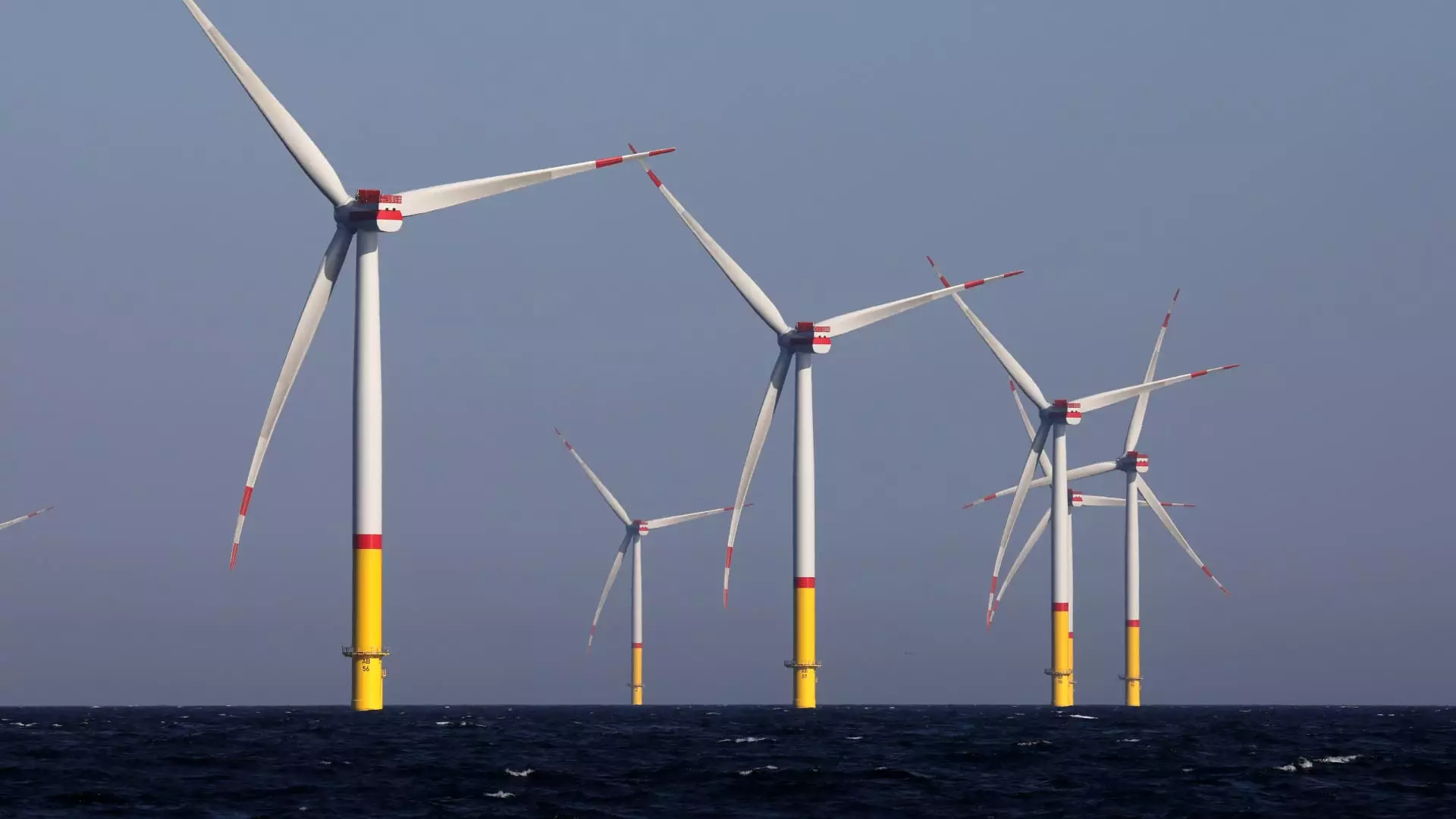In a bold but contested political climate, the construction of Equinor’s Empire Wind 1 offshore project in New York is set to resume—a decision that starkly reflects the ideological battleground surrounding energy policy in the United States. Cancellation of the Trump administration’s abrupt stop-work order is not just a mere reinstatement of a project; it represents a broader struggle for clean energy innovation against a backdrop of earlier obstruction and controversy. The flip-flopping on energy policy between administrations illustrates our nation’s precarious stance on climate initiatives in a time when such projects are more crucial than ever.
Empire Wind 1 is on course to become monumental—not simply because it’s the first offshore wind installation to supply New York City directly, but because it holds the potential to redefine energy sourcing for urban sectors that have long depended on fossil fuel. After Equinor invested a whopping $2.5 billion, the lifting of the construction ban raises hopes among environmentalists and industry advocates that New York can indeed lead an ambitious pivot towards sustainable energy.
Political Hurdles and Economic Impacts
New York Governor Kathy Hochul is rightfully celebrating this development amidst significant challenges. Equinor’s project is poised to create 1,500 union jobs, signaling a commitment not only to environmental stewardship but also to economic recovery within communities struggling in a post-pandemic landscape. However, the political theatrics orchestrated by Doug Burgum, Interior Secretary under Trump, risk stifling momentum. Declaring the Biden administration’s approval was rushed and lacking consultation, Burgum’s motives appear deeply entrenched in partisanship rather than a desire to genuinely evaluate the project.
It’s telling that the realities of climate change, clean energy sources, and economic opportunity were overshadowed by political posturing. The very notion of halting a project that promises to deliver electricity to half a million homes on dubious grounds not only raises eyebrows but also affects investor confidence in future renewable projects. Hochul’s prompt action—lobbying for a swift resolution—illustrates a proactive approach required to forge ahead in a politically hostile environment. In an age where climate calamities increasingly threaten lives and livelihoods, we cannot afford such bureaucratic meddling.
Trump’s Legacy: A Cloud Over Renewable Energy
Trump remains an influential figure in this narrative, known more for his attacks on renewable energy than for embracing a diversified energy strategy. His fixation on wind turbines is consistently characterized by unfounded claims regarding wildlife fatalities and economic failures. Despite his so-called energy dominance agenda, his administration’s policies seemingly sidelined clean energy in favor of traditional fossil fuels. Such patterns of behavior suppress innovation, bogging down a sector ready to leap forward.
The cumulative message from Trump’s administration—that wind energy is a false promise—stands in stark contrast to global trends favoring sustainable solutions. Recent studies consistently demonstrate that wind energy is among the cheapest sources of new energy generation. The bifurcation between a more enlightened view of the future and nostalgia for an extractive past culminates in dangerously postponed urgency for renewables.
The Road Ahead: Optimism Amidst Challenges
Despite the tumultuous political backdrop, the potential benefits of the Empire Wind 1 project cannot be overstated. With an operational goal aimed at 2027 and the inevitability of increased energy demands, the necessity for clean energy infrastructure feels more pressing than ever. Furthermore, Equinor’s ambitious plans for 54 towering turbines signify technological progress and an investment in the future, contrasting sharply with outdated arguments rooted more in misinformation than genuine environmental concern.
As other offshore projects like Revolution, Sunrise Wind, and Coastal Virginia Offshore Wind power ahead, the resilience of the renewable sector emerges clear. Encouragingly, industry leaders from competing firms are expressing confidence in their endeavors, suggesting that the tide is inexorably shifting toward a renewable reality on the Eastern Seaboard.
In a world fraught with uncertainty about climate change and political indecision, the revival of Empire Wind 1 embodies a flicker of hope—a crucial reminder that while obstacles abound, the commitment to clean energy must remain unwavering. Only through relentless advocacy and strategic perseverance will we inch closer to a sustainable future that looks beyond the shadows of past administrations.

Leave a Reply